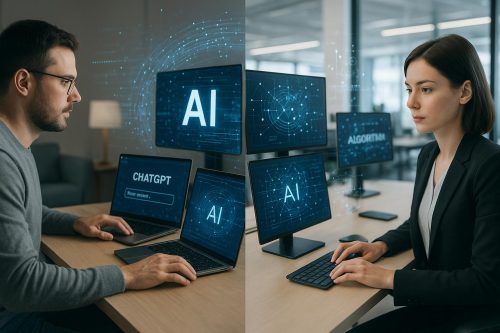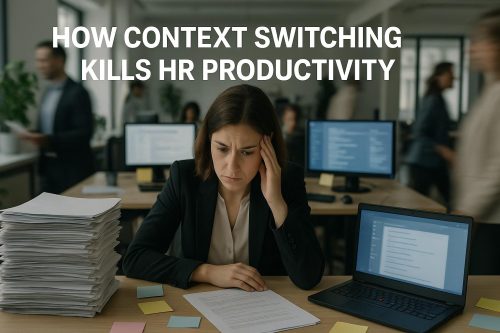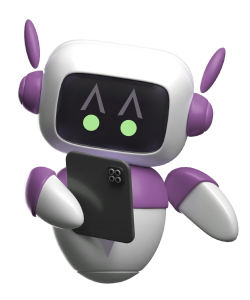Digital labor has burst onto the scene, and companies are feeling the impact. The rules of the HR game are being rewritten, and only those who can pivot quickly will thrive.
Digital labor – what’s behind this mysterious term that’s generating so much buzz in the tech world?
Humans are no longer the sole bearers of tasks, thanks to digital labor’s strategic pairing of artificial intelligence and automation, where the focus is on efficiency over ideology. Virtual assistants scheduling meetings, generative AI-powered chatbots answering customer questions, and software robots processing data are examples.
People and technology are the ultimate collaboration – when they come together, workflow excellence is within reach. Global workforce management takes a major leap forward with digital labor platforms, which expertly coordinate and mobilize far-flung digital teams – yes, even in the most remote parts of the developing world.
The Roles Digital Labor Will Replace
Digital labor represents more of a shift in responsibilities than total job replacement. Repetitive, manual tasks like social media posting, data entry, and basic customer service interactions are prime candidates for automation.
Human workers are then able to shift their attention to roles that truly play to their strengths, where imagination, analytical minds, and clever solutions are crucial. With this game-changing overhaul, workers aren’t just busy – they’re now producing genuinely high-caliber work that genuinely captures attention.
Weighing against the potential downsides of labor costs and job displacement are some significant upsides – having more time to relax and revamping the way we think about work. As labor markets evolve, gig work and platform employment emerge as key adaptations.
Sectors Adapting Quickly to Digital Labor
Some sectors are adopting digital labor more quickly than others. As the new face of call centers, AI virtual agents expertly guide customers through even the most complicated queries. Manufacturing uses robots to automate assembly streamlining the manual labor process, and reducing the risk of injury along the way.
Whether you’re swiping your card or clicking “pay now,” finance’s algo-driven guardian is hard at work, swiftly and accurately processing transactions while keeping fraud at bay. With AI-powered diagnostic tools and robotics operating side by side, healthcare is seeing unprecedented advancements in surgery and patient care.
Within these sectors, a clearer picture of how bargaining power, service work, and labor management will be affected is still emerging. The digital labor landscape is a puzzle, and researchers are still figuring out how all the pieces fit together – more study is necessary to get the full picture.
| Sector |
Digital Labor Application |
| Customer Service |
Chatbots, virtual assistants |
| Manufacturing |
Robotics, automated assembly |
| Finance |
Algorithmic trading, fraud detection |
| Healthcare |
AI-powered diagnostics, robotic surgery |
What HR Should Do To Prepare

Digital labor significantly impacts HR. Change is a disruptor – and HR pros must be the solution architects, crafting a plan to turn it into an opportunity.
Reskilling and Upskilling
Help employees adapt to new roles. With AI altering the workforce, certain skill sets are taking center stage, requiring humans to work in tandem with machines.
What if we started from scratch with job creation?
Imagine a workplace where humans and AI blend their strengths to achieve the impossible – that’s the future we’re building. Suddenly, you’re thrust into leadership positions where your decisions and actions have a direct effect on the bottom line.
Automating small, routine tasks can prevent burnout and improve worker experience. Content moderation gets a productivity boost when automation steps in, slashing monotonous tasks and giving moderators a sense of fulfillment.
Recruitment and Talent Acquisition
Look for talent with experience in a hybrid workforce. Digital labor calls for a new breed of worker – one who can leverage digital systems to get the job done. Why stick to outdated recruitment methods when you can study digital labor markets to pinpoint the skills everyone’s clamoring for, and recruit top talent accordingly?
Update evaluation criteria to include effective collaboration with digital labor systems. Two priorities stand out in the digital economy: tracking vital performance metrics and supporting your employees as they adjust to an environment where expectations are constantly in flux.
The Changing Role of Humans
Human skills like emotional intelligence, adaptability, and decision-making are increasingly valuable. Today’s labor markets are being rewritten by the explosive growth of digital media, challenging HR departments to revamp their traditional methods and tap into the opportunities, and challenges, presented by this digitally driven world. With copyright laws and digital media restrictions on the table, the stakes get higher and the challenge gets real.
Digital Labor: Ethical Considerations in a Hybrid Environment
Discussions around worker rights, data privacy, and ethical AI use are paramount. As the face of work changes, the International Labour Organization responds to the challenges posed by digital labor on long-established employment norms.
Now more than ever, HR teams need to roll up their sleeves and hammer out policies that tackle algorithm management head-on. We’ve made a pledge to uphold human rights and international labor standards, no matter what – it’s the cornerstone of our operations. What happens when human workers meet digital machines? The answer lies in understanding their mutually influential bond.
When humans and AI share a workspace, a lot of minds need to come together. Think of it as a team huddle involving management, developers, operations experts, and HR – all striving to make this unlikely partnership a huge success. Communication that counts and a team that clicks are the game-changers. Every time we go online, we generate data – a tidal wave of information that digital labor systems rely on to function. Privacy and security worries mount when we throw this into the mix – a whole new layer of concerns waiting to be addressed.
FAQs about digital labor
What is an example of digital labor?
The AI Age is booming: virtual assistants schedule meetings; chatbots fire off swift responses; software robots zip through invoices; and sophisticated algorithms dissect market trends, allowing humans to skyrocket their accomplishments. Say goodbye to tedious tasks and hello to accelerated workflows – that’s what these applications bring to the table.
Say you’re both a coder by day and a podcaster by night – are you doing digital labor or digital work? The line gets blurry, but knowing the distinction can change everything.
With digital work, you’re surrounded by digital tools – think typing up emails or crafting presentations that get your point across. Digital labor specifically involves digital technologies performing work typically requiring human input.
All digital labor is digital work, but not all digital work is digital labor. Digital labor often uses AI to blend human capabilities with automation. Picture this: a space where people from all over the world share their strengths, while clever technology accelerates their progress – it’s a recipe for success.
A digital labor platform is software or a system managing and deploying digital workers. This includes RPA software managing bots and AI platforms coordinating swarms of digital workers across systems.
Today’s digital economy is stitched together by online platforms that can tap into a vast, global talent pool – a development the International Labour Organization is keeping a close eye on. As we step into an era where AI generates with ease, the very fabric of digital labor is being reshaped, birthing new chances for growth as well as unexpected hurdles that test our mettle.
What is the difference between a bot and a digital worker?
Bots – digital workhorses – excel at handling routine tasks, allowing humans to focus on high-value activities that require imagination and flair. It follows predefined routines without machine learning.
What if your workforce could learn, adapt, and perform complex jobs on its own? That’s exactly what’s possible with digital workers fueled by AI and machine learning. Dig into Kylie Jarrett’s work and you’ll discover a smart, street-level take on digital labor and its interconnectedness with media studies and the digital economy – it’s writing that tackles the toughest questions head-on. Both physical and virtual spaces are their playground, and these workers know how to make them overlap seamlessly. Technology’s relentless pace doesn’t faze them – they’re experts at dissecting digital data and swiftly responding to the shifts.
Conclusion
Digital labor transforms business. Privacy concerns and ethical considerations are crucial, but they shouldn’t overshadow the fact that the opportunities are simply enormous.
Recruitment, training, and security aren’t standalone issues – they’re intertwined. HR must weave these elements together to create a comprehensive strategy that gets results. The modern workplace is a digital one, and companies that can’t adapt will get left behind; this tool helps prevent that. If you’re enjoying what you’re reading, you won’t want to miss what’s coming next – make sure to bookmark our blog for ongoing updates and stories.
 Digital labor significantly impacts HR. Change is a disruptor – and HR pros must be the solution architects, crafting a plan to turn it into an opportunity.
Digital labor significantly impacts HR. Change is a disruptor – and HR pros must be the solution architects, crafting a plan to turn it into an opportunity.
 Digital labor significantly impacts HR. Change is a disruptor – and HR pros must be the solution architects, crafting a plan to turn it into an opportunity.
Digital labor significantly impacts HR. Change is a disruptor – and HR pros must be the solution architects, crafting a plan to turn it into an opportunity.





